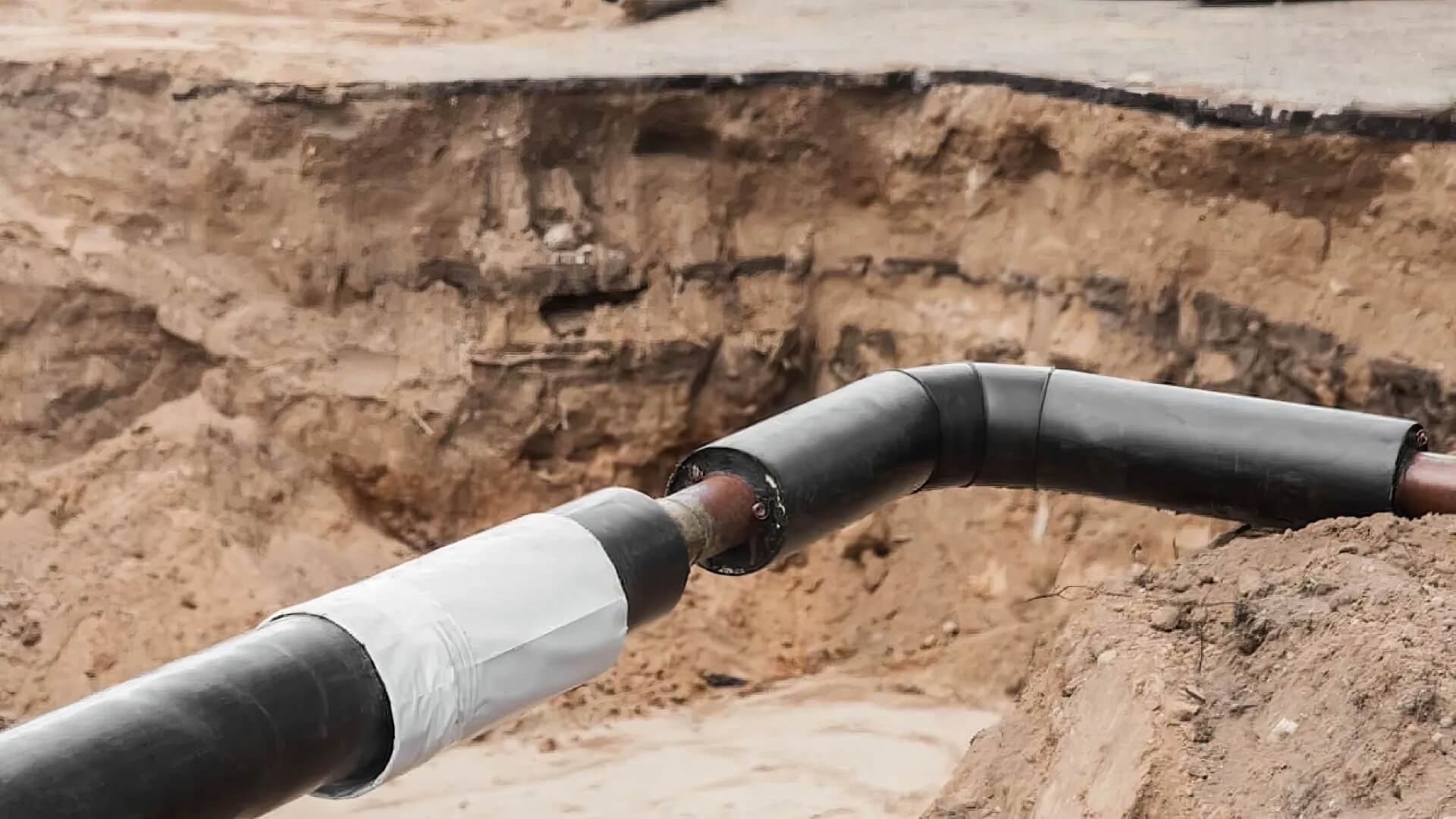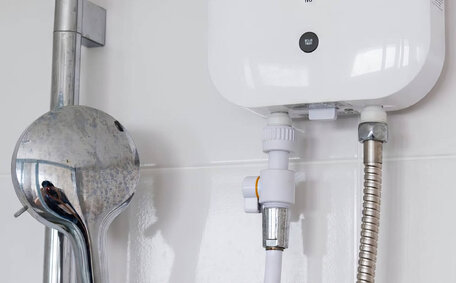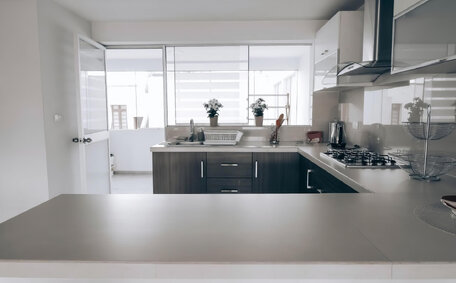What is Pipe Relining and Why is it Beneficial?
Pipe relining is a trenchless pipe repair method that rehabilitates damaged pipes by inserting a resin-impregnated liner that coats the inside of the pipe.
This no-dig solution extends the life of your pipes in sewer and drain systems without the need for complete replacement. Relining your pipes is far less disruptive than traditional pipe replacement methods, as there’s no need for digging up or destroying your surrounding infrastructure.
The pipe relining process can typically be completed rather quickly in just one to two days with minimal disturbance to properties. It also comes with long warranties, usually around 50 years. Both PVC and copper pipes tend to be suitable for relining.
The key benefits of pipe relining include:
- Fast repair process without major demolition work
- Long-lasting solution that prevents future pipe damage
- Less expensive compared to full pipe replacement
- Minimal disruption to properties
By choosing to reline your pipes instead of a complete replacement, you save considerable time and money while still restoring them to optimal condition. This article will explore the fastest pipe relining methods to achieve durable results with maximum efficiency.
Preparing for a Pipe Relining Project
Before beginning a pipe relining project, it is important to understand who holds the liability and responsibilities for the pipes being repaired. In residential settings, homeowners are usually accountable for sewer lines on their private property while local authorities manage public main lines. Identifying liability upfront prevents disputes down the track.
When preparing for a relining job, select an experienced provider like Erskine Park Plumbing who specialises in trenchless pipe solutions. Ask about their specific relining process, warranties, and how they will minimise disruption. Also, check if your home insurance policy covers pipe repairs.
To facilitate access, clear any items obstructing your pipes, such as furniture or storage boxes. Your plumber will also require space to arrange their equipment and move freely to access your pipes. Switch off water to the pipes at the mains where possible to keep the system dry and prevent leaks or bursts if pipes are disturbed.
Most importantly, inform all household members about the works, especially if tolerating some temporary drainage issues. Advanced notice means residents can plan ahead to minimise inconvenience during the rapid relining process.
Inspecting the Pipes
Before any relining work begins, the pipes must be thoroughly inspected to identify problem areas and determine the best course of action. High-resolution drain cameras are typically used to provide detailed internal images so technicians can accurately assess conditions.
CCTV drain inspections are crucial for catching all pipe defects and enabling precise measurements for custom-fitted liners. This technological advance eliminates guesswork, allowing for faster repairs to your pipes. It also permits technicians to oversee the progress while they work on your pipes throughout the job.
Another advantage of camera inspections is the confirmation of the materials that constitute your pipes. Relining methods are suitable for PVC, concrete, copper, and clay pipes, covering most residential drain systems.
Conducting comprehensive pipe examinations using the latest technology sets up the relining process for success. It enables technicians to address underlying issues, order correctly sized liner materials, and tackle problem sections first - all helping to expedite repairs.
Cleaning the Pipes
Before a liner can be inserted, the pipes must be thoroughly cleaned to ensure proper adhesion. Any debris, roots, grease buildup, or other blockages need clearing out.
High-pressure water jets are typically used to scour the pipe walls. The intense water pressure helps scrub away years of grime and corrosion. Alternatively, mechanical cleaning tools like rodding machines or expanding foam swabs may be employed to dislodge stubborn accumulations.
Vacuum extraction clears away the resultant debris and waste from your pipes. Technicians will repeatedly clean and vacuum until your pipes are impeccable from start to finish, ensuring clean surfaces for the liner to adhere to.
A sparkling clean pipe interior is crucial for liner contact and long-term durability. Proper pipe cleaning also allows insertion equipment and the liner to pass through unobstructed, making for swifter relining.
Preparing and Inserting the Liner
The pipe relining process involves inserting a resin-saturated liner material inside the damaged pipe to essentially create a 'pipe within a pipe’ once cured. Proper preparation of this liner is crucial.
The liner, drenched in epoxy resin, is tailored to the exact length and diameter of your pipes as gauged during the earlier inspection. Skilled technicians use specialised equipment to insert the flexible liner through an access point, feeding it through the pipe’s full length. Careful monitoring ensures the liner remains smooth without folds or creases.
Positioning the liner must be meticulous and requires expertise. Erskine Park Plumbing’s extensive relining experience guarantees efficient and hassle-free installation. Once correctly set in place, prompt curing by hot water or UV light reinstates structural stability, with minimal downtime before pipes are operational again.
Innovations in Liner Insertion
Several recent technological innovations are expediting the liner insertion process for faster pipe relining jobs.
One key development is robotic cutters that trim liners to exact lengths with precision. These automated cutters create clean edges to prevent liner slipping during insertion. Their accuracy also minimises wastage of liner materials.
Some companies now utilise inline packers that expand inside pipes and hold the liner taut against walls during curing. This innovation prevents liner movement for optimal resin contact.
Camera monitor systems allow technicians to view liner insertion on screens in real-time. This aids proper positioning without folds or creases forming.
Erskine Park Plumbing continually adopts such helpful innovations for improved customer experiences. Keeping up-to-date with the latest industry technology enables delivering prompt, high-quality solutions when relining pipes.
Resin Application
Applying epoxy resin is a vital step that gives pipe liners their strength and durability. Technicians thoroughly saturate the liner material as it’s fed through rollers submerged in the liquid resin.
Modern epoxy resins used are 100% solids, meaning no volatile organic compounds are present. This makes them environmentally friendly with zero odours or toxic emissions released on-site.
The resin permeates every inch of the liner, coating the interior to create a smooth, seamless new pipe surface that will withstand decades of use. As it cures, it forms a rock-hard barrier impervious to root intrusion or corrosion.
With professional saturation and plenty of curing time allowed, the resin-hardened liner offers superior longevity compared to traditional pipe materials. It’s this robust epoxy barrier that enables companies like Erskine Park Plumbing to provide 50-year warranties on pipe relining projects.
Curing Methods to Expedite the Process
Several curing methods are available to solidify the resin-saturated liner for faster relining jobs.
Air cured liners take the longest, requiring up to a full day to dry. Steam processes further slash drying times to around 90 minutes using 166°C steam.
Hot water systems shorten this to just 2-3 hours by circulating 82°C water through the pipes to accelerate curing. However, the fastest results come from UV light-cured liners which take only 30-90 minutes depending on pipe length.
UV light relining is growing in popularity due to its speed and efficiency. Technicians simply insert a special UV lamp attached to a speed controller into the liner and move it slowly down the pipe’s length. This high-intensity ultraviolet light triggers instant resin hardening upon contact for rapid repairs.
The curing method controls overall project durations. While air drying is lowest cost, the trade-off is much lengthier waiting compared to UV-cured liner which can restore pipes to full operation on the same day. Understanding these differences allows customers like Erskine Park Plumbing to select their preferred balance of speed and affordability.
Air Drying
Air drying is the most affordable curing method for pipe relining but also the slowest. It relies solely on natural air circulation to evaporate the resin’s solvents and harden the liner.
After saturating the liner with epoxy resin, technicians will leave it to cure in place inside the pipes. Drying times typically range from 18-24 hours depending on ambient temperatures and pipe length and diameter.
While air drying does not require specialised equipment, the lengthy timeframe often means customers cannot use their plumbing system for a full day until hardened. For fastest pipe relining with same-day restoration of function, UV light or steam processes may be preferable.
Hot Water Curing
Hot water curing speeds up the resin hardening process considerably compared to air drying. It involves circulating 82°C water through the pipe to heat the liner and accelerate drying.
Technicians use a special device with inflatable bladders to isolate pipe sections. Heated water flows into the bladders, transferring warmth through the pipe walls into the liner. This temperature triggers faster resin polymerization while also cleaning the pipes.
Typical hot water cure times range from 2-3 hours. The water’s heat energy halts when technicians drain the system upon confirming resin hardness. While quicker than air drying, hot water systems do cost more to operate.
Steam Curing
Steam curing uses high-temperature steam to rapidly harden pipe liners. Technicians inject 166°C steam directly into the pipe to heat the resin-saturated liner. This advanced curing method shortens hardening times to around 90 minutes.
The intense heat from steam accelerates the chemical reaction that solidifies the epoxy resin. As steam condenses and transfers warmth through the pipe walls, the liner cures evenly from within. Steam systems also effectively sanitise and clean pipe interiors during use.
The high equipment costs of steam curing systems make their use recommended primarily for longer, wider pipes. However, for critical drainage infrastructure needing swift reinstatement, the time and functionality savings steam offers can justify the investments.
With steam power speeding up cure times by over 50% compared to hot water methods, it empowers companies like Erskine Park Plumbing to complete relining jobs rapidly. This allows customers’ plumbing functionality to be restored on the very same day in many cases.
UV Light Curing
UV light curing is the most advanced and rapid method available for curing pipe liners. This innovative technology uses high-intensity ultraviolet light to instantly harden the resin saturating the liner material.
Technicians insert a UV lamp attached to a speed controller into the liner once positioned correctly inside the pipes. As they slowly withdraw the light down the pipe’s length, the UV rays trigger instant resin solidification upon contact.
Typical UV curing takes only 30-90 minutes depending on the pipe’s length and diameter. The intense UV exposure leaves the epoxy resin thoroughly hardened to maximum strength. It also emits no heat, fumes or odours during the relining process.
UV-cured pipe liners form a seamless, jointless interior pipe surface that maintains smooth flow and is resilient to corrosion and leaks. With rapid installation plus long-term durability, UV relining represents the cutting-edge of trenchless pipe remediation technology currently available.
Inspection, Testing, and Finalization
Once curing finishes, the relining job enters its final quality assurance phase. Technicians thoroughly inspect the liner using remote cameras again, checking for any last-minute defects needing patching.
Pressure testing then validates the liner’s strength and adhesion to pipe walls. Clean water flows through your pipes up to rigorous test standards, ensuring no leaks develop.
These stringent final checks validate durable repairs that will endure for decades within warranted guidelines. They also enable companies like Erskine Park Plumbing to fine-tune processes, enhancing service quality.
After confirming integrity, the access point is sealed off and pipes are reconnected to restore normal function. The rapid relining procedure now concludes, enabling residences and businesses to enjoy renewed plumbing infrastructure with minimal downtime.
Potential Relining Issues and Solutions
Even in experienced hands, pipe relining projects can occasionally encounter problems. Common issues that may arise include:
- Liner slippage - The liner moves out of position during curing. Using robotic cutters and inflation packers prevents this.
- Resin deficiency - Insufficient resin saturation leading to soft spots in the cured liner. Thorough pre-saturation checks avoid deficiency.
- Liner folding/creasing - Wrinkles forming in the liner limits internal diameter. Specialised insertion equipment minimises this occurrence.
- Curing complications - Equipment malfunctions or resin stability problems arising. Troubleshooting knowledge and backup systems counteract curing issues.
The expertise of an established relining specialist like Erskine Park Plumbing is invaluable for averting or promptly resolving any liner setbacks. With robust quality assurance procedures and decades of trenchless rehab experience, potential relining problems pose minimal disruption.
If issues still eventuate, the priority is rectifying them quickly to complete projects on schedule. Having professional mitigation processes empowers rapid solutions, preventing timely repairs from descending into lengthy delays.
Choosing a Quality Pipe Relining Service
When selecting a pipe relining provider, it is wise to choose an experienced company with a proven track record. Look for many years of industry experience as well as specialised expertise in trenchless pipe rehabilitation.
A quality provider like Erskine Park Plumbing will be fully licenced, insured, and transparent about their relining process. They should provide lengthy warranties of around 50 years on materials and workmanship. Technicians should hold trenchless repair qualifications from industry bodies.
Customer service is also important seamless communication and cleanup of work sites after relining shows professionalism. Cost-effectiveness, without compromising quality equipment or materials, also demonstrates good value.
To experience Erskine Park Plumbing’s premium pipe relining services for yourself, contact the team on 1300 349 338 or jobs@erskineparkplumbingservices.com.au.






